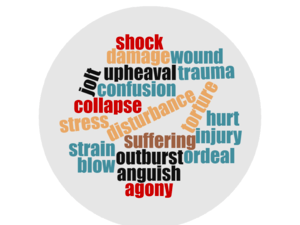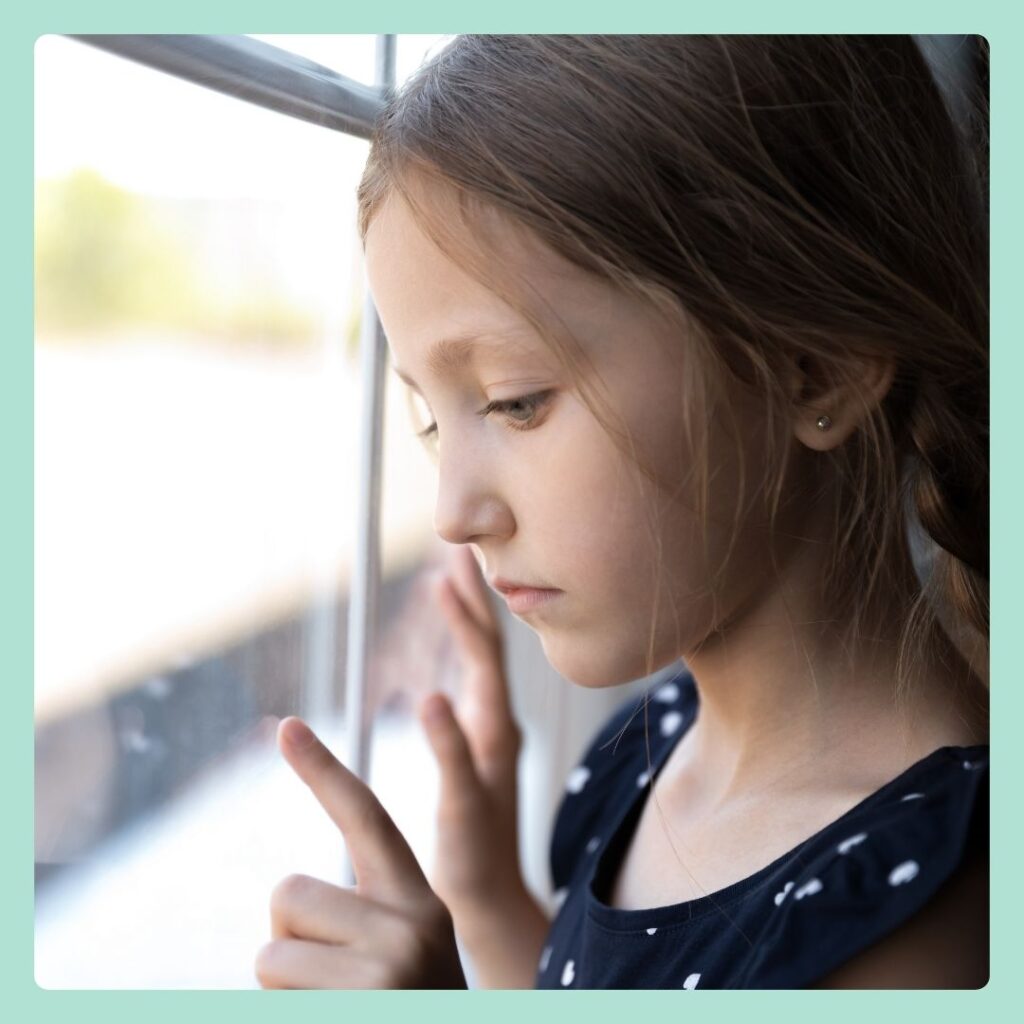Working with students who have experienced trauma can be very challenging, but it is such important work. Oftentimes, these are the kids that need us the most- the ones who have seen and heard and experienced unimaginable burdens. They need us so desperately to help them make sense of the world that they see through their lens of hurt. Since these students spend the majority of their time in school, this is where we must help them be successful, despite the trauma they have experienced. So, in the spirit of helping them to the best of our abilities, let’s dive into this complex and fascinating topic!
What is Trauma?
The Diagnostic and Statistical Manual of the American Psychiatric Association (DSM-V) defines a traumatic event as
The person experienced, witnessed, or was confronted with an event or events that involved actual or threatened death or serious injury, or a threat to the physical integrity of self or others.
Traumatic events include sexual abuse, physical abuse, domestic violence, community and school violence, medical trauma, motor vehicle accidents, acts of terrorism, war experiences, natural and human-made disasters, suicides, and other traumatic losses.
According to the Centers for Disease Control (CDC) Violence Prevention Website, Adverse Childhood Experiences (ACEs) is the name that refers to most of the research related to trauma. The CDC considers ACEs to be a major public health issue because they are linked to many lifelong problems such as risky behaviors, chronic health conditions, and even early death. The CDC notes that as the number of ACEs increases, so does a person’s risk for these outcomes.
Types of Trauma & How Students Experience It
Dr. Christine Dobson at the Child Trauma Academy explains that there are 3 main types of trauma:
Acute: usually a one-time event
Complex: persists over time, often progressive
Developmental: when complex trauma leads to arrested or delayed cognitive, academic, physical, emotional, spiritual, and/or social development
Dobson goes on to explain that children exposed to trauma may experience it by showing symptoms of:
 Difficulty concentrating
Difficulty concentrating- Exaggerated startle response
- Irritability
- Anger outbursts
- Hypervigilance
- Restricted range of emotion
- Avoidant, anxious behaviors
- Self-destructive behavior
- Low self-esteem
- Shame and guilt
- Aggressive behavior
- Sleep disturbance
These behaviors do not necessarily signify trauma, but should be raise concern.
Classrooms Responsive to Student Trauma
Due to the debilitating, lifelong consequences of trauma, it is crucial that have we have tools to support these children. These tools consist primarily of creating safe, stable, and nurturing environments for children.
For children experiencing trauma, here are some key supports to create this environment:
- Have clear, consistent rules for behavior.
- Create a structured and predictable environment.
- Set a routine and avoid changing it whenever possible; if change is necessary, prep students.
- Build relationships.
- Avoid power struggles at all costs.
- Stay calm.
Additionally, you can train your staff on how to create these types of environments in their classrooms. Dr. Dobson encourages staff to incorporate the 4 R’s into classroom activities whenever possible: relevant to the child’s life, relationship-building, repetitive, and rewards-based.
She also emphasizes the importance of staff understanding that the following situations will likely trigger the alarm state in children who have experienced chronic trauma:
- impending harm (including getting in trouble).
- complex tasks.
- confusing/multiple sensory stimuli.
- an atmosphere of fear, hunger, exhaustion, pain, illness, or threats.
Other times it is difficult to tell what was a trigger for a student and may have been something that occurred earlier in the day.
Helpful Resources for Student Trauma
I work in a high-poverty district where we have many, many students struggling with trauma. As a result, all of our schools employ trauma-informed practices. Meaning, trauma-specific interventions that are designed specifically to address the consequences of trauma and to facilitate healing and success in school. As a result, all of my counseling resources are trauma-informed. Below are some that you can use to help you work with your own students of trauma.
 In my newsletter every month, I include a free trauma-informed guidance lesson- you can sign up for it here, if you’d like.
In my newsletter every month, I include a free trauma-informed guidance lesson- you can sign up for it here, if you’d like.- If you are working with students in counseling groups, guidance lessons, or even individually, on my School Counselor Stephanie website resources page, you can find this free healthy coping skills activity to help them manage their negative feelings.
- If you work in a school with a lot of students battling trauma, the chances are great that you will also experience a lot of student crisis. A student crisis is typically defined as one of the “3 Hurts”- hurting oneself, hurting another, or someone threatening to hurt them. Here is a post on crisis intervention and prevention resources, if you or your students of trauma need them!
- Here is a link to a presentation on trauma that you can give to your staff!
Trauma Resources
Finally, I’d like to leave you with some of my favorite trauma-informed resources. Here they are below…
- Films: Resilience and Paper Tigers
- TED Talk on Trauma from Pediatrician Dr. Nadine Burke
- Books/Articles/Websites:
- Foster Care: One Dogs Story of Change by Julia Cook
- Riley the Brave by Jessica Sinarski
- What Do I Say About That? by Julia Cook
- The Sanctuary Model from Dr. Sandra Bloom
- Helping Children Succeed by Paul Tough
Remember that populations with high trauma can be exhausting to work with because they have so many challenges at home and they bring all these issues to school with them. Keep doing the best you can. You ARE making a positive difference every day.









[…] often looks like wraparound services that support students beyond the school building. It may be students in crisis, students with mental health concerns, or students with intense behavior needs. In this case, we […]